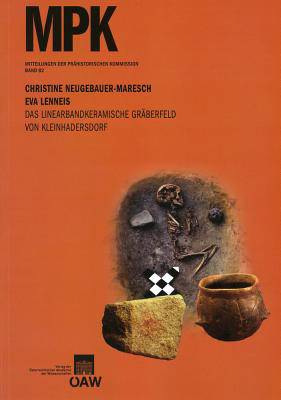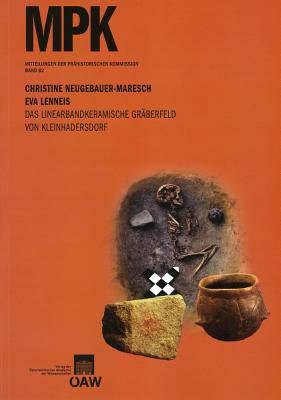
- Afhalen na 1 uur in een winkel met voorraad
- Gratis thuislevering in België vanaf € 30
- Ruim aanbod met 7 miljoen producten
- Afhalen na 1 uur in een winkel met voorraad
- Gratis thuislevering in België vanaf € 30
- Ruim aanbod met 7 miljoen producten
Das Linearbandkeramische Graberfeld Von Kleinhadersdorf
Christine Neugebauer-Maresch, Eva Lenneis
Paperback | Duits
€ 206,45
+ 412 punten
Omschrijving
The Linear Pottery cemetery of Kleinhadersdorf dates from the second half of the 6th millennium BC and is the best-known and largest Early Neolithic burial site in Austria. The publication gives a complete documentation of the old rescue excavations by Josef Bayer and Viktor Lebzelter in 1931, as well as those of the systematic investigations of the Neolithic cemetery under the direction of Johannes-Wolfgang Neugebauer and Christine Neugebauer-Maresch between 1987 and 1991. The first part of the volume provides an overview of the 100-year-long history of the archaeological investigations of this significant research enterprise. In addition to the archaeological analysis of burial customs, statistical and scientific analyses provide insights into the networks of this early farming population. For example, the use of specific raw materials shows contacts over several hundred kilometers. Based on the results from strontium isotope analyses a few immigrants are detectable among the buried individuals. The second part of the volume is devoted to anthropological analysis of the discovered skeletons. In addition to a comprehensive catalogue, presentation and discussion of the pathological and traumatic changes in bones and teeth are the central focus. The study thus provides a contribution to investigations into living conditions in the Early Neolithic.
Specificaties
Betrokkenen
- Auteur(s):
- Uitgeverij:
Inhoud
- Aantal bladzijden:
- 404
- Taal:
- Duits
Eigenschappen
- Productcode (EAN):
- 9783700175988
- Verschijningsdatum:
- 3/08/2015
- Uitvoering:
- Paperback
- Formaat:
- Trade paperback (VS)
- Gewicht:
- 2072 g

Alleen bij Standaard Boekhandel
+ 412 punten op je klantenkaart van Standaard Boekhandel
Beoordelingen
We publiceren alleen reviews die voldoen aan de voorwaarden voor reviews. Bekijk onze voorwaarden voor reviews.










